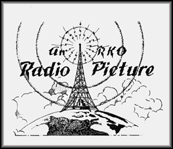
I'm coming around to the stance that copyright is bullshit and all art properly belongs in the public domain. Claim: Artists are not entitled to receive pay for the reproduction and use of their art.
What do you think of that? I'm not well versed on intellectual property law and its controversies, but a certain free culture movement outlet (QuestionCopyright) lead by Brooklyn-based animator Nina Paley currently has my ear. The above logo, her invention, is intended to change our thinking about the commonplace fact that, if you create a work of art that incorporates copyrighted material, the government will silence you. A copyright is a monopoly on a piece of information, issued and upheld by city hall, with the exclusive intent to remove that information from the sphere of free speech; copyright is censorship.
The consequence we live with is an impoverishing of culture. Pride and Prejudice and Zombies, an actual published version of Jane Austen's novel reworked to include among the sundry proposals and carriage rides a zombie outbreak, is possible because no one holds a copyright on Pride and Prejudice; it's public domain. However, I have no hope of ever obtaining permission to publish my own like-minded novel, Bridget Jones's Zombie Diary. This chapter heading is all I am permitted to share publicly:
129 lbs. (but post-Christmas), alcohol units 4 (excellent), cigarettes 21 (poor but will give up totally tomorrow), number of zombies killed 13The invention and indefinite extension of ubiquitous copyrighting as a Fortune 500 business model, starting in the mid-twentieth century and becoming more prohibitive every year, has ensured that virtually all creative works made since the 1920s are presently locked out of public use, not a single such copyright will expire until 2019, and all works published today will remain unavailable into the next century.
Let's bring this close to home. Tideland, Terry Gilliam's latest (most?) neglected masterpiece, has been appallingly mishandled in its DVD release by distributor THINKFilm: Transfer features the incorrect aspect ratio 1.77:1, which a child will tell you is an unacceptable substitute for the glorious theatrical 2.35:1. THINKFucker is in no hurry to amend the situation, and so I remain unable to view and share this crushingly beautiful film. Now, if Tideland were not automatically copy protected by law, but rather by default freely available in the public domain, anyone could come along and print their own DVD version (say, the Beggar's Canyon Edition of Tideland) and legally collect all profits from its sale. Doubtless one such version would be made by persons who actually cared about quality enough to preserve the original 2.35:1 ratio, and that disc I would happily buy and show to you.
Closer to home. We will not in our lifetime see an official release of The Wonder Years. The soundtrack is an albatross; hundreds of classic songs licensed for one-time broadcast use only, plus syndication. Hundreds of copyrights between you and Winnie Cooper.
...
Animators are the most creative people on the planet. When not limited to live action photography motion pictures become the freest possible mode of expression, and so attract the most dynamic creative talent. This is why Adult Swim is consistently the best block of programming on television.
Don't be misled by the staid ways of postwar Disney or the rigid forms of conventional anime: It should not be surprising that the two most prominent cultural forces in animation happen to suffer (prosper) from creative anemia. Think instead of South Park, the program that long ago punched through the frontiers of satire, then accelerated. (They're now so far ahead that "edgy", the descriptor itself, sounds as obsolete as the Borscht Belt.) Think also of the generally acknowledged greatest sitcom of all time, The Simpsons. Hell, think of SpongeBob SquarePants, the kids show that could well be the apotheosis of the sight gag, surpassing anything in the Looney Tunes catalogue and even (I feel guilty saying it) Tom and Jerry. Japan is not without its superlative innovators either. The experimental miniseries known as FLCL is a freewheeling marriage of narrative and form as densely constructed as Citizen Kane or Ulysses, telling in its brain-melting fashion a deeply affecting coming-of-age story for which I offer the suggestive but altogether inadequate subtitle, Your Erection and What To Do With It: An Electric Riff on Puberty, Space Pirates and the Home Run.
Roger Ebert's exuberant review of Being John Malkovich opens with the exclamation, "What an endlessly inventive movie this is!" I'd like to turn that exclamation into a kind of seal of commendation — call it The Malky — and stamp it on worthy new films, shows, books-games-what-have-you as my highest honor, to share the delight of something new added to the world.
Sita — if, like me, you are comfortably unfamiliar with Indian* mythology — is a much-interpreted princess of yore whose romantic legend ennobles the tragic lot of the virtuous woman. Her colorful story and, more to the point, the telling of it among contemporary Indian and non-Indian audiences is the subject of Nina Paley's animated boogie woogie breakdown, her tribute to "the greatest break-up story ever told", produced independently by donation and loan (Paley admits to falling rather badly in debt) and made available online in 2008, generously sans copy protection. The film is in violation of certain arcane state and federal copyright laws due to the unlicensed use of vintage Jazz Age recordings and faces censure in the event of public exhibition. In the event of public exhibition the public's mind will be blown by the wreck of a Hindu circus train in Toontown, throbbing psychedelia spilled into one of Gilliam's more violent Python landscapes and Sita wiggling with all the pre-Code vavoom of Betty Boop — 30s surrealism on holiday aboard the Yellow Submarine — triple-narrated by quarrelsome silhouette puppets and a scratch pad proxy for Paley herself.
* dots not feathers

